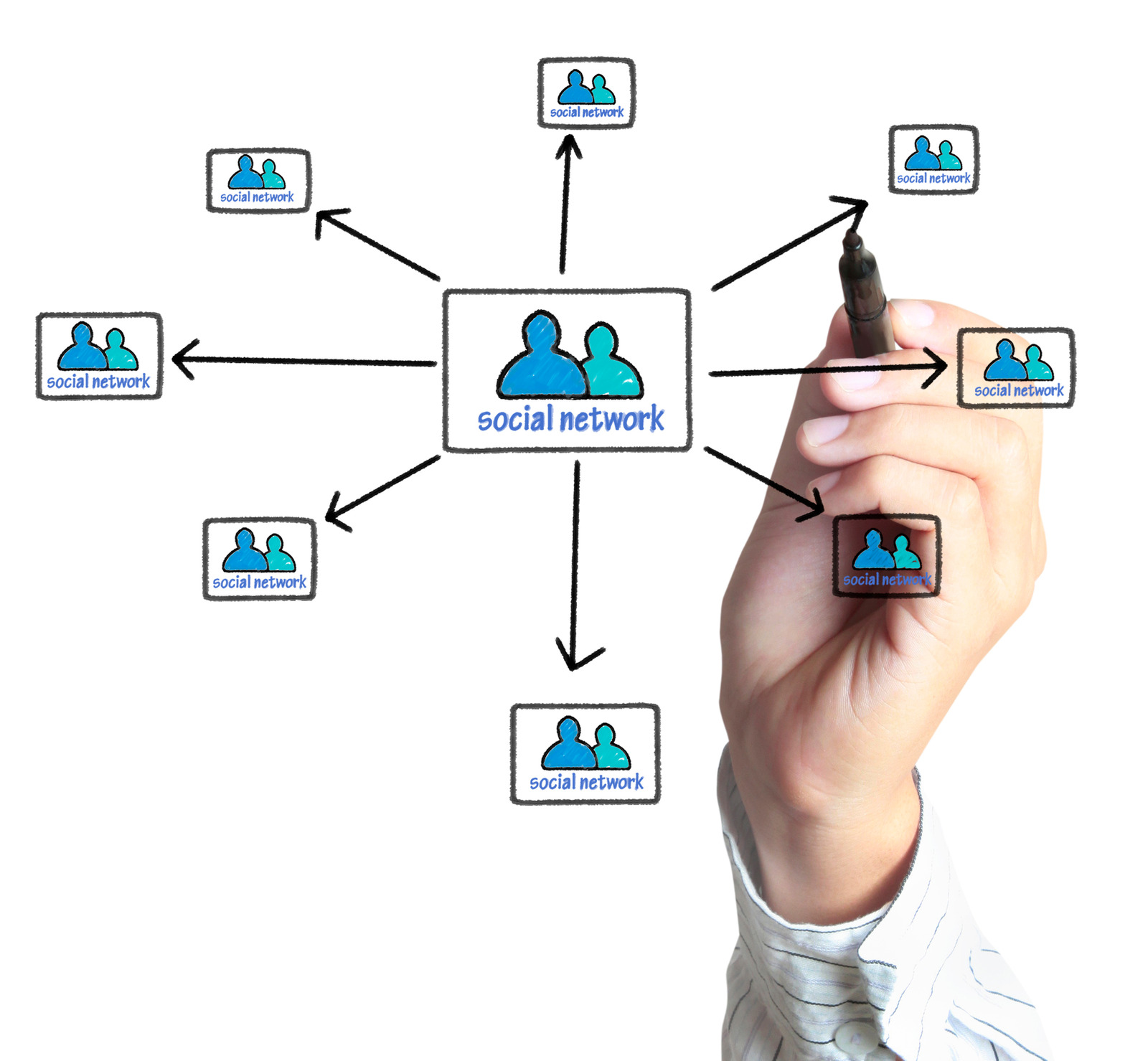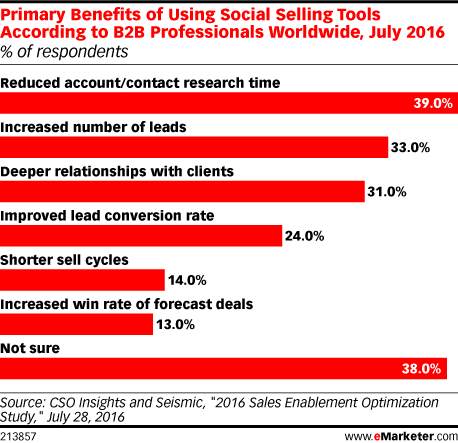
The importance of social media in influencing perceptions during the buying journey continues to increase, with 75% of B2B buyers using social media to research products or services they are interested in.
Prospects are using their social networks in a range of ways –reaching out to peers, consulting industry experts—before they engage with you directly.
But you don’t need to wait for them to reach out to you. By practicing social selling, you can proactively connect with prospective buyers to establish yourself as a trusted authority.
Find out what social selling is, and how you can make it work for your business:
What Is Social Selling?
Social selling entails salespeople leveraging their social networks (LinkedIn, Facebook, Twitter, etc.) to engage with prospects, so they are top of mind when someone is ready to take a next step in the buying process.
Social selling benefits your organization by:
- Making Effective Use of Time
In a survey by CSO Insights and Seismic, almost 40% of B2B professionals said that social tools have reduced the amount of time they spend researching accounts and contacts.
One of the main reasons for this is that people can make the most of their networks to foster mutual connections, with 87% of B2B buyers reporting they have a positive impression if someone is introduced to them through a professional network
- Connecting with Prospects in an Authentic Way
The good news is that prospects want to have a conversation. 62% of B2B buyers say they respond when a salesperson connects with them to offer information that reflects their needs, and that this creates value for their business.
- Developing Credibility
Establishing a good reputation helps, as over 90% of people will engage with someone who can demonstrate they are subject matter experts and are well-respected in their industry.
- Producing Results
Over three quarters of salespeople using social selling techniques are outselling salespeople who don’t. Social sellers are 51% more likely to hit their quotas, and they generate 45% more sales than their non-social selling counterparts.
Click here to get your free, personalized Social Selling Index score from LinkedIn.
Remember that social selling is—at its heart—about building relationships.
It’s not about “spamming” people (filling their inboxes with unsolicited messages and calling them out of the blue). It’s about actively listening and finding the right moment to enter the conversation, becoming a valuable contributor to decision making as opposed to an unwelcome nuisance.
How to Make Social Selling Work for You
In his book Social Selling Mastery, Jamie Shanks identifies four distinct pillars of the social selling process and coins the acronym FEED:
1. Find
At this stage, you need to do two things—merge your CRM database (contacts) with your existing social networks and identify decision makers or influencers that are not already part of your circle.
Consider questions like:
- Who else in the business will be a part of the buying process?
- Are there related corporate entities you need to factor into your analysis?
- What other industry experts and competitors will influence prospects?
Your goal is to begin identifying and socially surrounding buyers and their committees, understanding the ecosystem that will shape their buying journey. By actively listening, you will know when the time is right to begin engaging.
2. Educate
There are two approaches you can take:
- Share Your Internal Content: The types of content your sales team should have at their disposal might include e-books, blogs, videos, or infographics. Resources should be chosen strategically, ensuring they’re suited for where the buyer is in their journey.
- Disseminate Valuable External Resources: Providing unbranded assets to prospects helps set you apart as a knowledgeable and helpful resource interested in solving the problem at hand.
The purpose of educating potential customers is to give them the decision-making information they need, and to establish yourself as their go-to resource.
3. Engage
The key here is to engage by adding value (don’t message prospects solely for the sake of communicating). You can boost awareness on social media by tagging relevant individuals and groups and encouraging them to connect, like, or follow you.
4. Develop
Now that you’ve established your framework, you’re ready to nurture your network and help it grow.
- Check Your Digital Voicemails: Did someone look at your profile on LinkedIn recently? Take some time to write them a personalized connection request.
- Monitor Content Engagement: Are people looking at the information you’re disseminating, in particular those who are not yet part of your network? Add them to your circles or invite them to connect.
Use the power of three—setting a target to grow your social networks by at least three people each day.
Social selling can be beneficial for any business, regardless of industry, product, or service. When executed effectively, it can significantly help businesses expand their brand awareness, develop relationships with prospects in a genuine and organic way, generate well -qualified leads, and increase close rates.
The tools are at your fingertips. It’s just a matter of getting committed and using social selling to grow your business.
Core Online Marketing is an outsourced online marketing company with expertise in online lead generation, content creation, email automation, and much more! Contact us or sign up for our free online marketing seminar (soon to be a webinar!).
How is your company’s online marketing? Try our self-assessment to find out!
Like this post? You’ll also enjoy:
- Does Your Website Suck? - April 3, 2024
- Why You Need an Online Marketing Plan - March 21, 2024
- 7 “Must-Do’s” For Online Marketing Success - March 7, 2024


